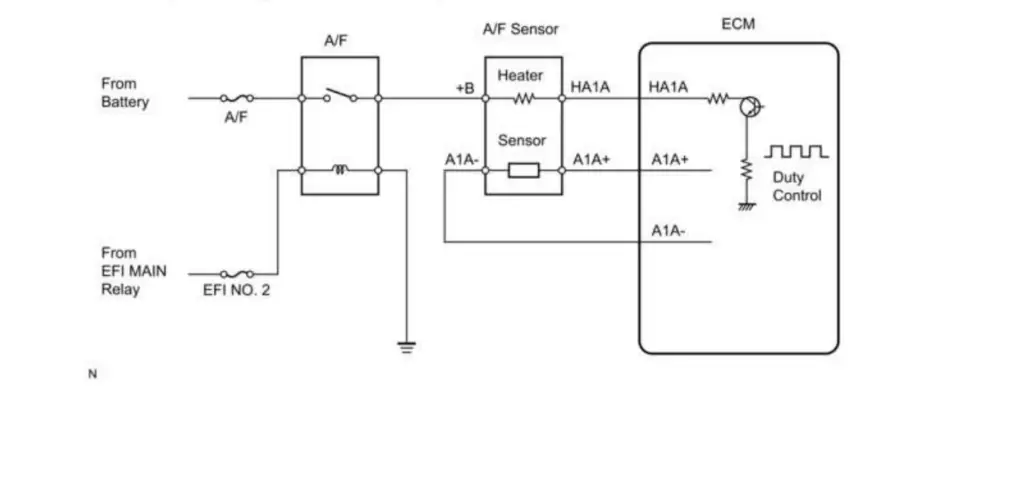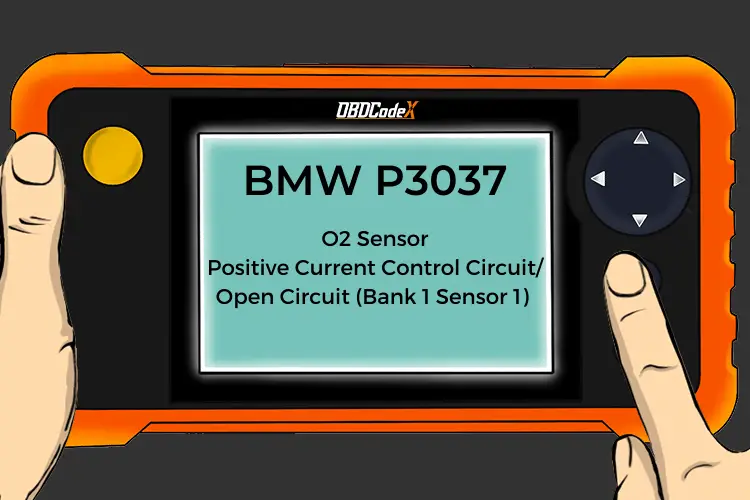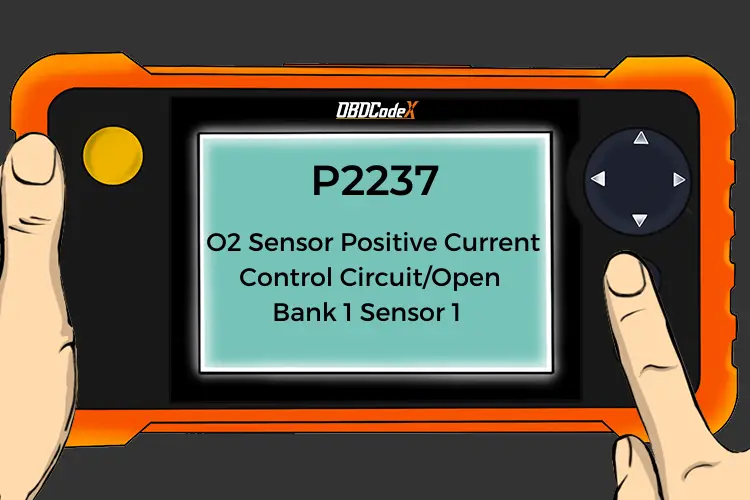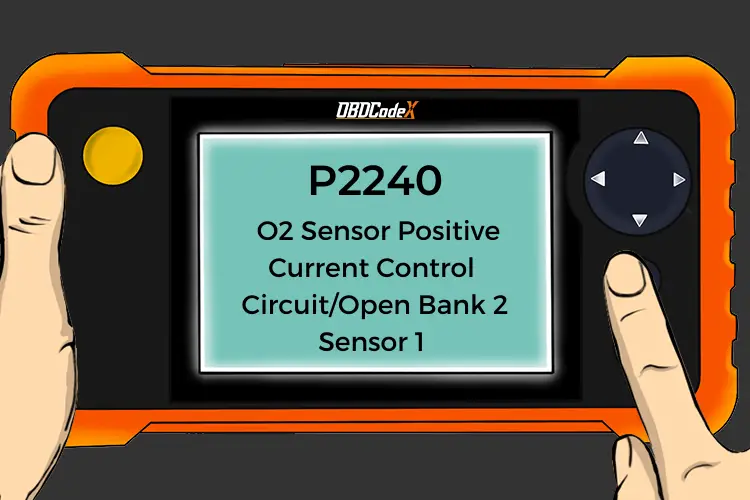P2239: O2 Sensor Positive Current Control Circuit High Bank 1 Sensor 1
Is your scanner showing P2239?
No worries. We'll show you what it means and how to deal with it.
P2239: O2 Sensor Positive Current Control Circuit High Bank 1 Sensor 1
OVERVIEWWhat Does The P2239 Code Mean?
A stored code P2239 means that the powertrain control module (PCM) has detected a positive current discrepancy in the upstream oxygen (O2) sensor for engine bank number one. Bank one is the engine bank that contains the number one cylinder. Sensor 1 denotes the upstream (pre-cat) sensor. The positive current control circuit is a low voltage circuit.
In order to monitor the exhaust oxygen content for each engine bank, as well as catalytic converter efficiency, the PCM uses data input from heated oxygen sensors (HO2S).
Oxygen sensors are constructed using a zirconium dioxide sensing element situated in the center of a vented steel housing. Small platinum electrodes are soldered between the sensing element and wire leads in the oxygen sensor harness connector. The O2 sensor harness connector plugs into the controller area network (CAN) which attaches the HO2S wiring harness to the PCM connector.
Each HO2S is threaded (or studded) into an exhaust pipe or manifold. It is positioned so that the the sensing element is near the center of the pipe. Spent exhaust gases exit the combustion chamber (via the exhaust manifold) and continue through the exhaust system (including catalytic converters); flowing over the oxygen sensors. Exhaust gases flow into the oxygen sensor through specially designed vent holes in the steel housing and swirl around the sensing element. Drawn through wire lead cavities in the sensor housing, the air fills a tiny chamber in the middle of the sensor. The heated air (in the tiny chamber) forces the oxygen ions to produce energy that is recognized by the PCM as voltage.
Variations between the number of O2 ions in ambient air, and the number of oxygen molecules in the exhaust, cause the heated oxygen ions inside the HO2S to bounce from one platinum layer to the other, very swiftly and repetitively. As the surging oxygen ions shift between platinum layers, variations in HO2S output voltage occur. The PCM sees these variations in HO2S output voltage as changes in exhaust oxygen concentration.
Voltage signal outputs from the HO2S are lower when more oxygen is present in the exhaust (lean condition) and higher when less oxygen is present in the exhaust (rich condition). This portion of the HO2S uses low voltage (less than one-volt).
In a separate section of the sensor, the HO2S is preheated using battery voltage (12-volts). When engine temperature is low, battery voltage heats up the HO2S so that it can begin to monitor exhaust oxygen content faster.
If the PCM detects a degree of voltage that is too high and not commiserate with acceptable parameters, a P2239 will be stored and a malfunction indicator lamp (MIL) may be illuminated. Most vehicles will require multiple ignition cycles (with a failure) for MIL illumination.

P2239 wiring diagram
What Are The Symptoms Of The P2239 Code?
Symptoms of a P2239 trouble code may include:
- Reduction in fuel efficiency
- Diminished engine performance
- Stored misfire codes or lean/rich exhaust codes
- Service engine soon lamp illumination
What Are The Potential Causes Of The P2239 Code?
Causes for this code may include:
- Defective oxygen sensor/s
- Burnt, chafed, broken, or disconnected wiring and/or connectors
- Faulty PCM or PCM programming error
How Serious Is This P2239 Code?
An HO2S with a control circuit problem could result in a very poor running engine and various drivability issues. A code P2239 should be classified as severe and rectified as quickly as possible.
How Can You Fix The P2239 Code?
A diagnostic scanner, a digital volt/ohmmeter (DVOM), and a source of reliable vehicle information will be needed in order to accurately diagnose a code P2239.
Step 1
Connect the scanner to the vehicle diagnostic port and retrieve all stored codes and pertinent freeze frame data. You will want to write this information down just in case the code proves to be an intermittent one.
Next, clear the codes and test drive the vehicle. One of two things will occur at this time. Either the code P2239 will be reset or the PCM will enter readiness mode.
If the code is intermittent and the PCM enters readiness mode, it may prove to be more difficult to diagnose. Conditions which caused the P2239 to be stored may need to worsen before an accurate diagnosis can be made. If the code is reset, continue with your diagnosis.
Step 2
Connector face views, connector pinout charts, component locator charts, wiring diagrams, and diagnostic flow charts (pertaining to the code and vehicle in question) can be found by using your source of vehicle information.
Perform a visual inspection of HO2S related wiring and connectors. Replace wiring that has been cut, burned, or damaged.
Step 3
Unplug the HO2S in question and use the DVOM to check resistance between the positive current control circuit and any ground circuits. If there is continuity, suspect a defective HO2S.
Step 4
If the code P2239 continues to be reset, start the engine. Allow it to reach normal operating temperature and idle (with the transmission in neutral or park). Connect the scanner to the vehicle diagnostic port and observe oxygen sensor input data on the data stream. Narrow the scope of the data stream to include only pertinent data and you will get a faster response.
Step 5
If the oxygen sensors are functioning normally, voltage on pre-cat oxygen sensors will cycle continuously between 1 and 900-millivolts once the PCM enters closed loop operation. Post-cat sensors will cycle between 1 and 900-millivolts as well but they will settle at a certain point and remain relatively stable (compared to the pre-cat sensors). HO2S which fail to cycle adequately should be considered defective if the engine is in good working order.
Step 6
If the HO2S displays battery voltage or no voltage on the scanner data stream, use the DVOM to obtain live data from the HO2S connector. If the output data remains the same, suspect an internal HO2S short that will require replacement of the HO2S.
Note: In most cases, you will rectify this type of code by replacing the HO2S in question but complete your diagnosis anyway
Recommended Parts
Below are some recommended auto parts to help you address the trouble code affecting your vehicle and get it running smoothly again:
>>> O2 Sensor
>>> Twippo 372Pcs Waterproof Wire Connectors Kit
>>> ECU
>>> Autel Scanner MaxiCOM MK808S
>>> KAIWEETS Digital Multimeter
Note: During the purchasing process, please check carefully whether the part you want to buy fits your car!
Reference Sources
P2239 O2 Sensor Positive Current Control Circuit High Bank 1 Sensor 1, OBD-Codes.




